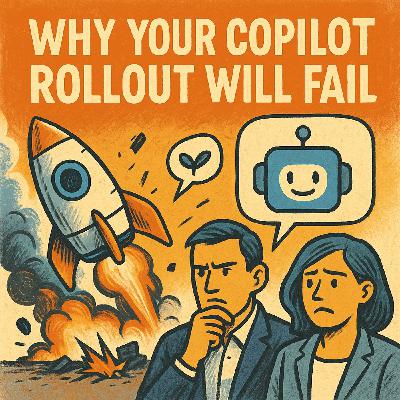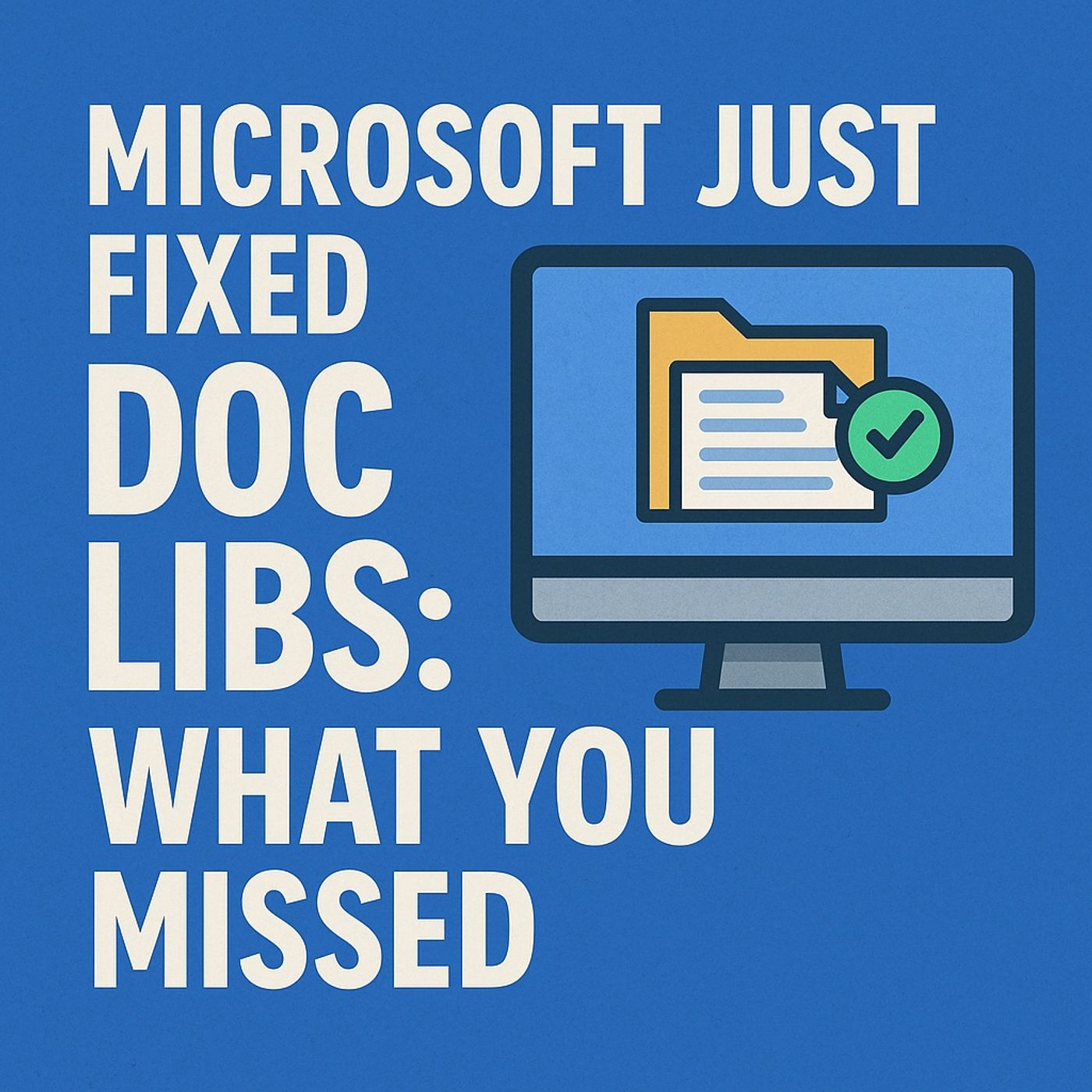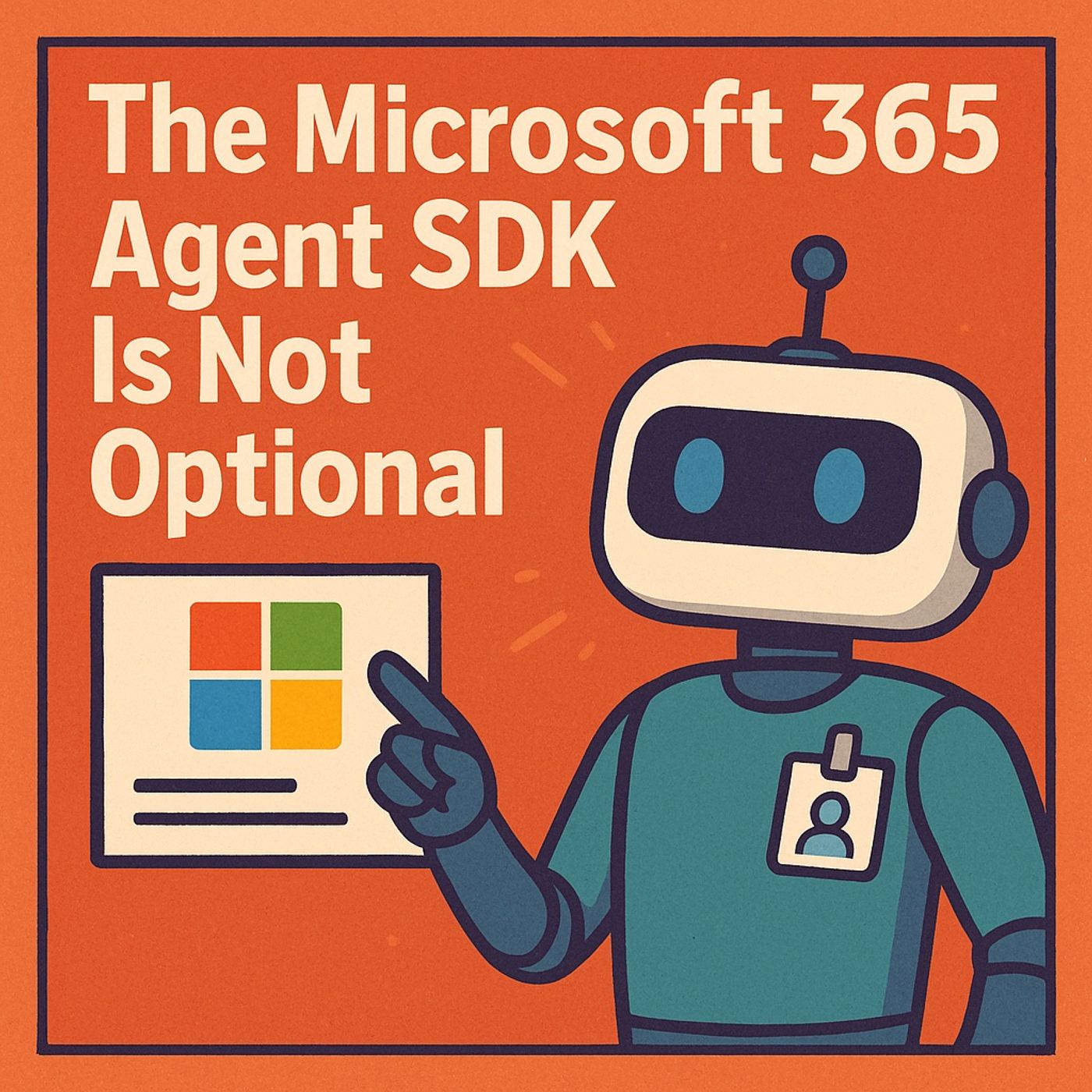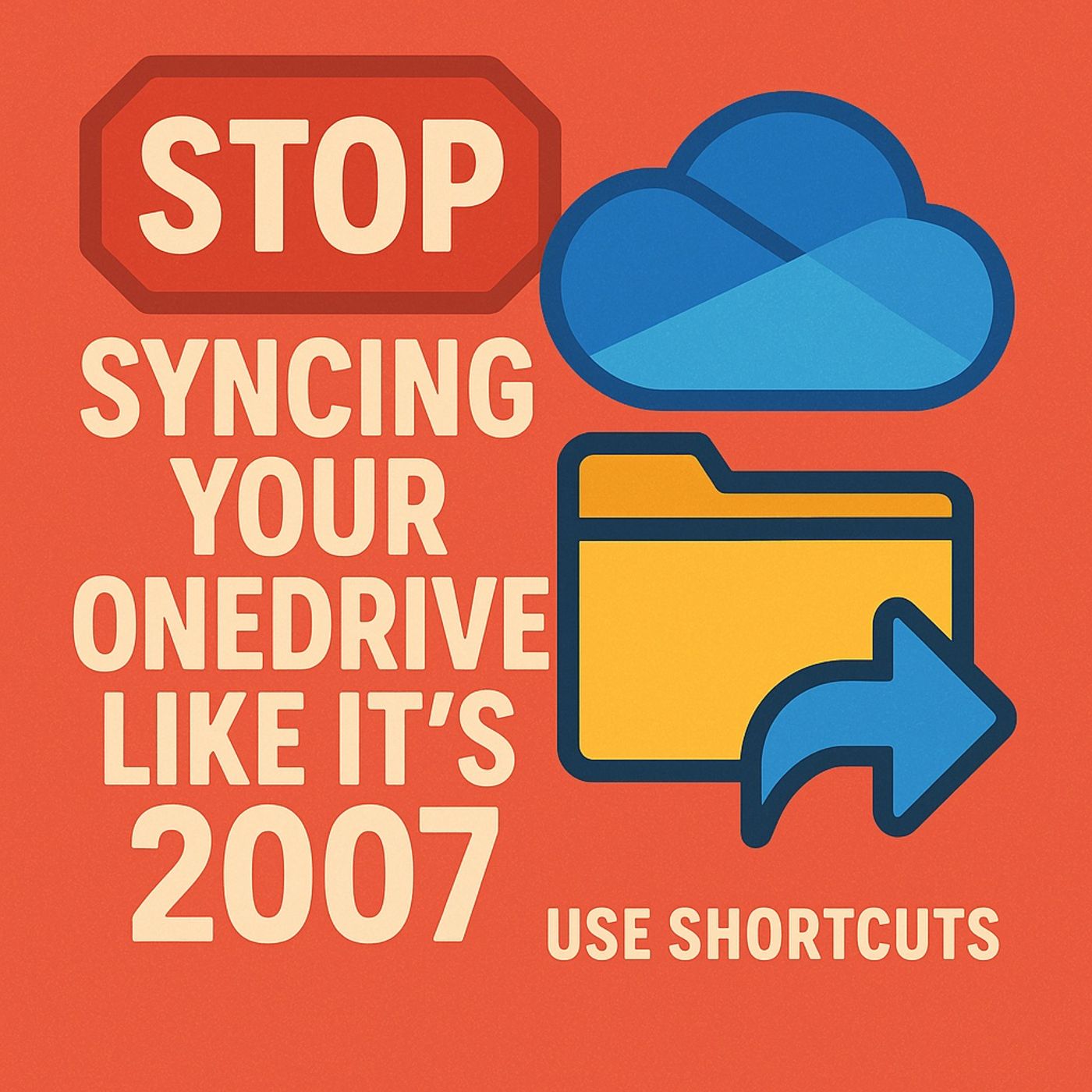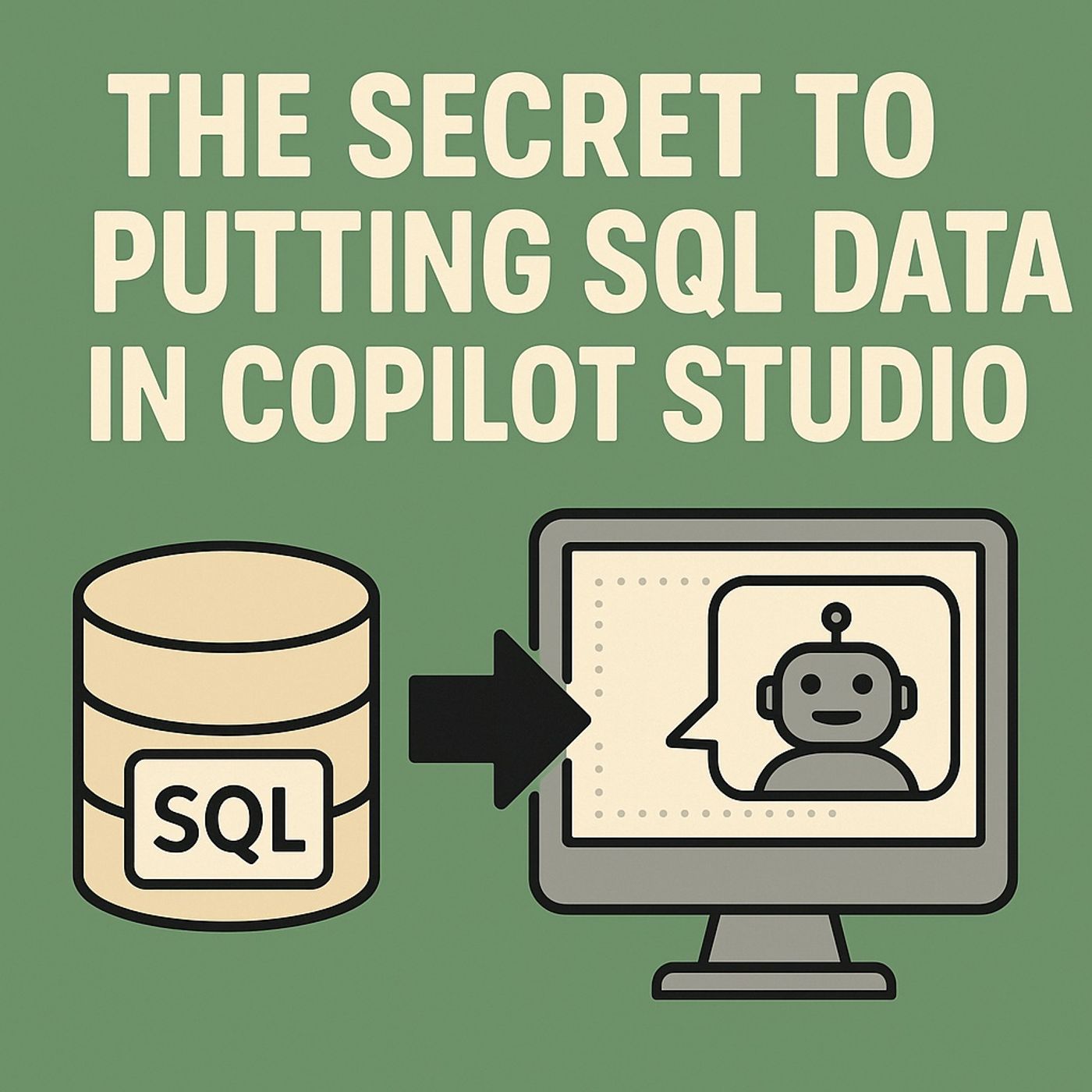Why Your Copilot Rollout Will Fail
Update: 2025-11-21
Description
Most Copilot rollouts fail—not because of technology, but because of people, culture, and workflow reality. In this episode, we break down the five failure modes that quietly kill Microsoft Copilot adoption inside real organizations. You’ll learn why “turning it on” isn’t enough, how leadership behaviors determine success, why governance panic stalls progress, and how targeted use cases and repeatable prompting frameworks can turn your rollout around in the first 90 days. This is the practitioner’s guide to launching Copilot in Microsoft 365 with actual behavior change, not just licenses and hype. What This Episode Covers 1. The Uncomfortable Truth: Your Copilot Rollout Will Fail (If You Treat It Like a Tech Project) Most organizations approach Copilot as a feature toggle: enable licenses, host a town hall, and expect magic. The result? Users try Copilot once, get “meh” output, and never return. Leaders blame training, IT blames users, and executives wonder why they spent six figures on AI with no visible business impact. In this section, we cover:
Whether your leaders demo their actual work, live, using Copilot. Not polished. Not perfect.
Real work, real drafts, real time saved. Visible permission → visible adoption.
Invisible permission → rollout failure. That’s the whole game.
Who This Episode Is For
Become a supporter of this podcast: https://www.spreaker.com/podcast/m365-show-podcast--6704921/support.
Follow us on:
LInkedIn
Substack
- Why deployment ≠ adoption
- Why behavior change is the actual product
- What early signals predict long-term MAU
- The single week-one decision that tells whether your rollout succeeds
- The psychology of knowledge-worker habits
- Why generic prompting fails
- Why Tuesday tasks (recurring weekly tasks) drive speed-to-first-use
- The “emotional thermostat” leaders set—anxiety vs curiosity
- Why visible permission from leadership beats training
- Targeted use cases
- A leadership coalition that learns in public
- Telemetry that measures real behavior
- Prompt packs, templates & artifacts users can steal
- Copilot Studio bots embedded in workflows
- Why “productivity” is too vague to drive adoption
- How to build role-specific, task-level scenarios
- The three metrics that matter (the triad):
- Time-to-draft
- Decision clarity
- Meeting compression
- The 10/30/60 Tuesday Task model
- The C4 prompting pattern (Context, Constraint, Critique, Continue)
- How to build an artifact library that kills the blank-page tax
- How to map your data surfaces (SharePoint, OneDrive, Teams, Mail, CRM)
- Why sensitivity labels are not optional
- Why DLP needs to be piloted with real humans
- How to explain grounding vs training to kill AI mythologies
- How to build a safe sandbox for early users
- Real examples of governance misconfigurations causing panic—and the fixes
- Weekly wins
- Office hours
- Role-based showcase clips
- Two champion tracks (peer & leader)
- A predictable, boringly consistent communications rhythm
- How to measure change with real telemetry
- Why entitlement waves outperform blanket rollouts
- How to segment by job-to-be-done
- Why MAU, artifact submissions, and time-to-draft beat vanity metrics
- How to reassign low-usage licenses strategically without politics
- How telemetry predicts where support, prompts, and training should go
- C4 prompting as the universal skill
- How to embed prompts in Word, Outlook, Loop, SharePoint, and Teams
- Why micro-copilots (Copilot Studio) outperform giant all-purpose bots
- How to build “guardrails by design”
- The importance of artifacts in habit formation
- Week –1: Form AI council, pick two pilot roles, baseline time-to-draft
- Weeks 1–3: Data readiness, sandbox creation, governance fixes
- Weeks 4–5: C4 training + artifact creation
- Weeks 5–7: Pilot launch, telemetry tracking, comms cadence
- Weeks 7–9: Copilot Studio micro-bots for recurring tasks
- Weeks 9–12: Scale to more roles, right-size licenses, publish playbook
Whether your leaders demo their actual work, live, using Copilot. Not polished. Not perfect.
Real work, real drafts, real time saved. Visible permission → visible adoption.
Invisible permission → rollout failure. That’s the whole game.
Who This Episode Is For
- IT leaders & CIOs launching Microsoft 365 Copilot
- Change management and enablement teams
- Department heads wanting real productivity outcomes
- Copilot champions & power users
- Governance, risk & compliance teams
- Organizations struggling with stalled AI adoption
- Anyone responsible for digital transformation in M365
Become a supporter of this podcast: https://www.spreaker.com/podcast/m365-show-podcast--6704921/support.
Follow us on:
Substack
Comments
In Channel

